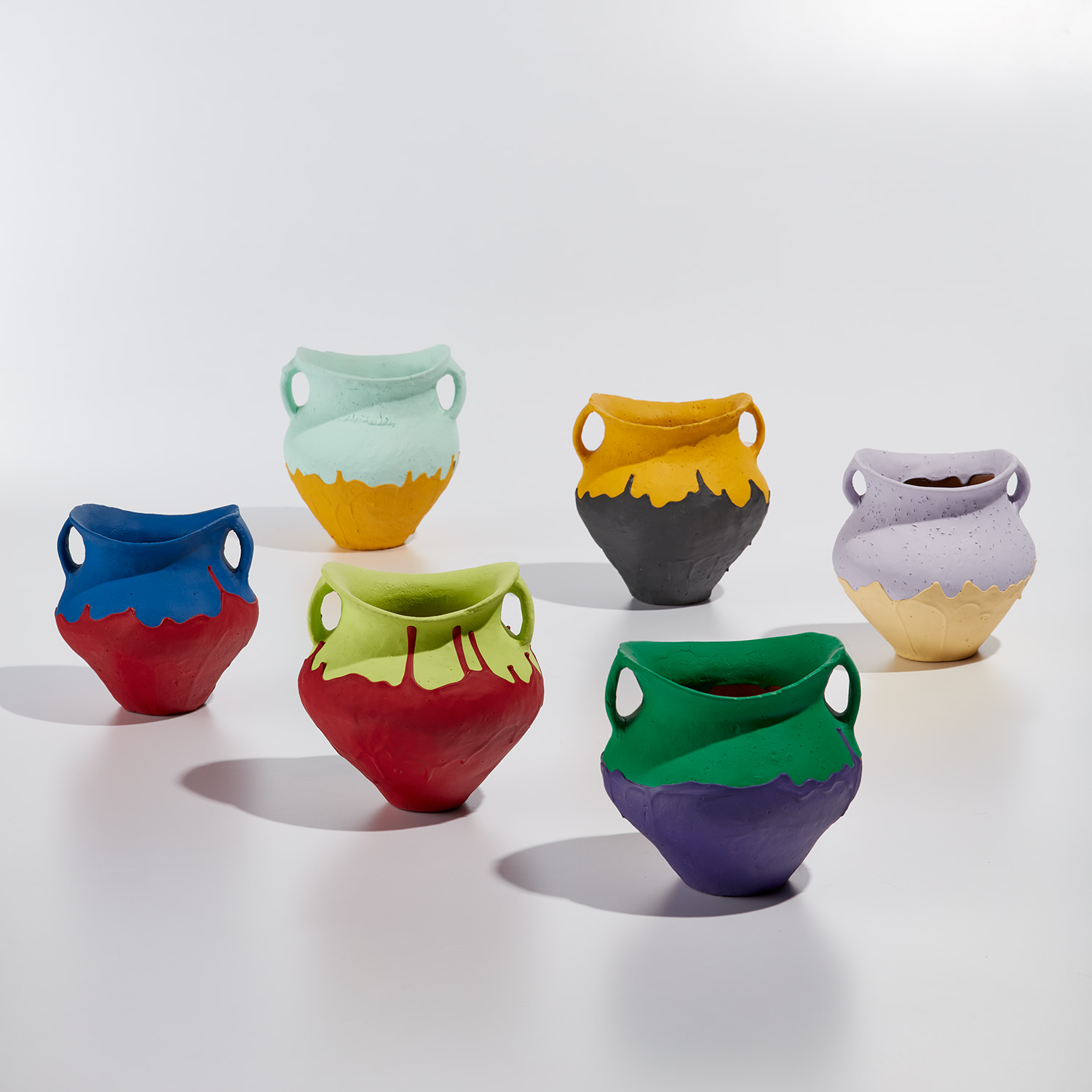



40
Ai Weiwei
Colored Vases
signed and dated "Weiwei 2014" on the underside of the blue and yellow vase
industrial paint on Neolithic vases, in 6 parts
smallest 5 3/4 x 5 3/4 x 6 1/4 in. (14.6 x 14.6 x 15.9 cm)
largest 6 7/8 x 6 7/8 x 7 in. (17.5 x 17.5 x 17.8 cm)
installation dimensions variable
largest 6 7/8 x 6 7/8 x 7 in. (17.5 x 17.5 x 17.8 cm)
installation dimensions variable
Executed in 2014.